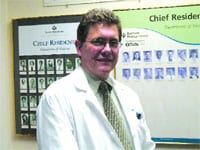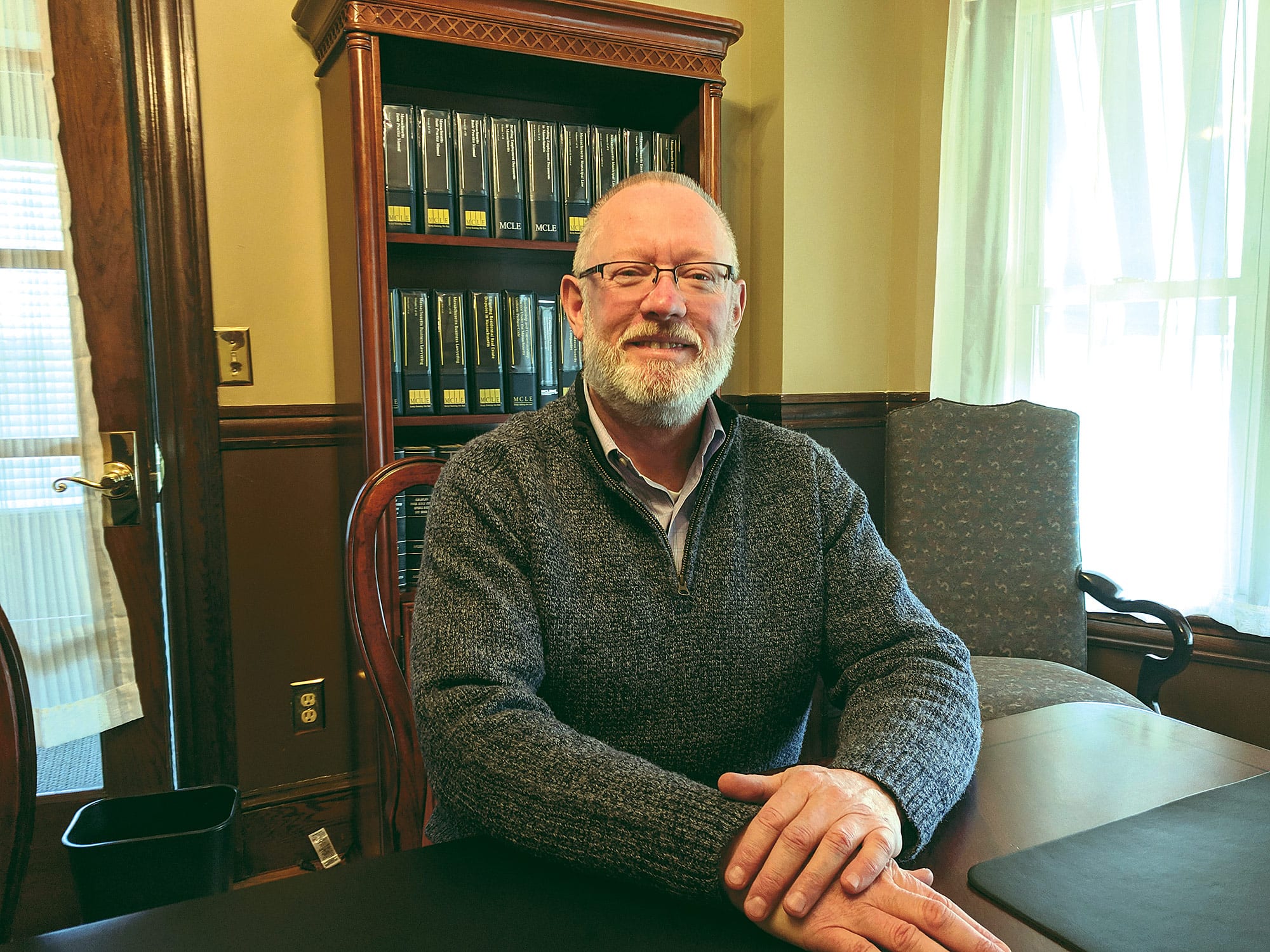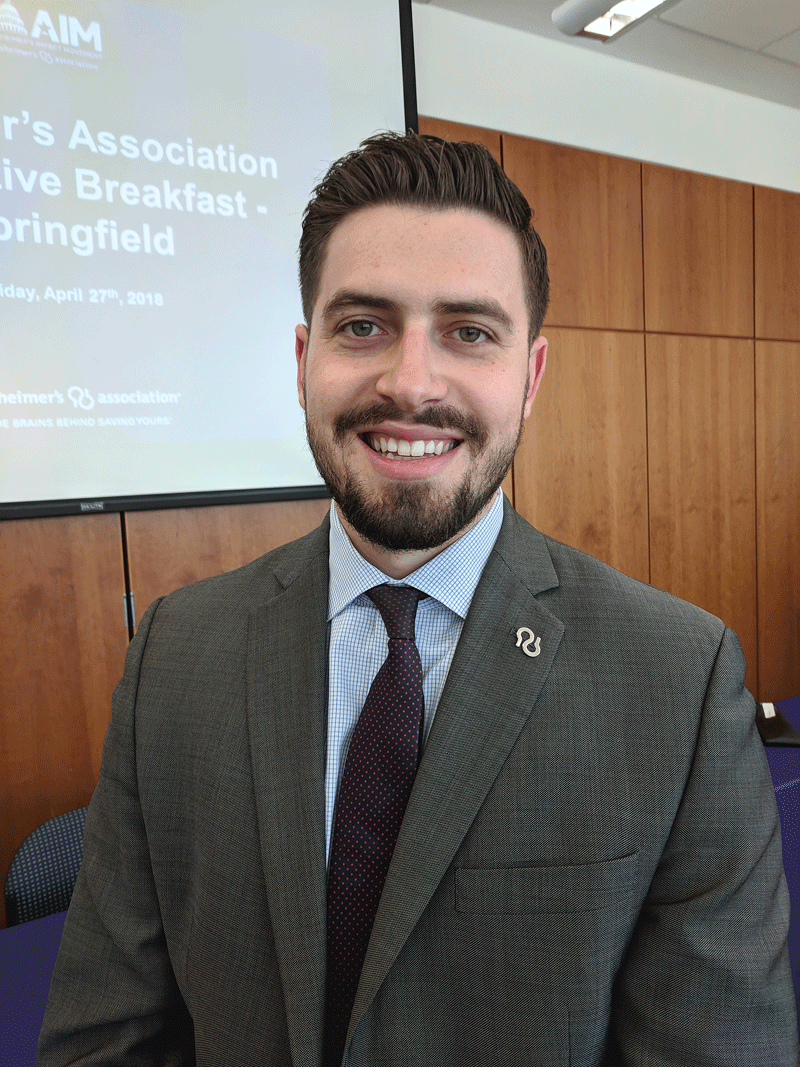Waiting Game Access to Primary Care Is a Growing Problem in Massachusetts
It seems like everyone has a story to tell about long waits — weeks, if not months — to see a doctor. That is, if they can get an appointment at all.
Statistics bear out the anecdotes: access to primary-care doctors is shrinking, mainly because the pipeline developing new internists out of medical school, to replace those who are retiring, is drying up.
“In the ’90s, 60{06cf2b9696b159f874511d23dbc893eb1ac83014175ed30550cfff22781411e5} of residents went into primary care,” said Dr. Kevin Hinchey, director of the Internal Medicine Residency Program at Baystate Medical Center and a primary-care doctor himself. “This year it’s three residents [out of 18], and that’s a bumper crop. Last year, it was one. Next year, it might be one again. Those aren’t very good numbers.”
They look even worse when one considers the impact of Massachusetts’ recent health-reform law mandating that residents carry insurance, meaning more people in the Commonwealth are seeking care from a shrinking number of internists.
Hinchey said health reform, which is now being debated nationally, has brought the primary-care shortage to more people’s attention, but it was an issue long before the Bay State’s insurance mandate. Still, the situation has clearly grown more worrisome over the past decade, if the paths being chosen by medical students is any indication.
“Here’s the concern of people in the health care profession who have studied other countries — and I share this concern,” said Peter Straley, CEO of Health New England, the Springfield-based health insurer. “Unless we have an adequate supply of primary-care practitioners, we can’t have an effective delivery system. If you look at developed countries that are going a good job with health care and lowering costs, you’ll see that they do one thing better than us: they have more primary-care doctors than specialists.”
A large part of the growing disparity in the U.S. between primary-care doctors and specialists is financial, Straley told The Healthcare News.
Ideally, he explained, “you want to see a primary-care doctor first because that’s who you have a relationship with. If they’re good, they know a lot about you — not just the drug they prescribed last time they saw you, but about your family situation, whether you’re eating well and exercising. I believe that’s key to getting good care.
“But the way we pay doctors favors being a specialist,” he said. “For the most part, specialists do procedures, and we tend to reimburse procedures. Lab work, X-rays, minor surgeries, EKGs – these could all be things doctors might do to treat you, and those are paid more than an office visit. Because of that, when doctors come out of training with a lot of debt, unless they have a driving vision to be a primary-care doctor, the economics point them toward doing something else. The number of people coming out of school wanting to be in primary care has been dropping for years.”
Hinchey agreed that, while the cost of a medical education is continuing to rise, the income disparity between primary-care doctors and subspecialists is significant.
As just one example, “a person leaving our program after three years could go into primary care, or they could go into hospital medicine and get paid probably 30{06cf2b9696b159f874511d23dbc893eb1ac83014175ed30550cfff22781411e5} more as a hospitalist, with the same level of training, than as a primary-care doctor,” he said. “And if you’re going to graduate from medical school with $150,000 or $200,000 in debt, you basically have a mortgage on your diploma, and you have to get another mortgage to have a house, and it’s tough to see how you’re going to swing that.”
Yet, as Hinchey and others see it, finances aren’t the only reasons access to primary care could dwindle in the years to come. And solving the issue is going to take some creative thinking.
Sobering Statistics
According to the most recent comprehensive survey of Massachusetts doctors, trends don’t bode well for primary care in the Commonwealth.
In a summary of its annual Physician Workforce Study, the Mass. Medical Society (MMS) reports that, while fewer physician specialties are operating under severe labor market conditions than in previous years, the situation in primary care continues to weaken, with both family medicine and internal medicine in short supply for the fourth consecutive year, and the percentage of primary-care practices closed to new patients rising to the highest level ever recorded by the society.
Specifically, the percentage of family-medicine physicians who are no longer accepting new patients has increased over the past three years from 30{06cf2b9696b159f874511d23dbc893eb1ac83014175ed30550cfff22781411e5} in 2007 to 40{06cf2b9696b159f874511d23dbc893eb1ac83014175ed30550cfff22781411e5} in 2009. The percentage of internal-medicine physicians no longer accepting new patients has also risen, from 49{06cf2b9696b159f874511d23dbc893eb1ac83014175ed30550cfff22781411e5} in 2007 to 56{06cf2b9696b159f874511d23dbc893eb1ac83014175ed30550cfff22781411e5} in 2009.
Meanwhile, long wait times for appointments for new patients continues to be a problem; the average wait time in internal medicine is 44 days, six days shorter than last year, but for family medicine, the average wait time of 44 days is eight days longer than in 2008.
“While the latest study shows some improvement with fewer shortages in specialty care, it also shows a deteriorating condition of primary care,” said Dr. Mario Motta, president of the MMS. “Not only do we have continued physician shortages, but more practices are closed to new patients, and the shortage in ob/gyns adds to the dilemma, as many female patients look to those physicians for their primary care.”
Noting that primary care is the gateway to the health care system for most patients, Motta said the shortages have ramifications within Massachusetts and the nation.
“With our state health-reform initiative, we quickly learned that universal coverage doesn’t equate to universal access,” he said. “While the Commonwealth adjusts to the disparity between the supply of physicians and the demand for health care, our analysis can be instructive on a national level about what physician supply means for access to care when universal coverage is implemented.”
Environmental Factors
The issue of declining primary-care capacity needs to be addressed on several levels, not all of them income-related.
Last spring, the MMS released its annual Physician Practice Environment Index, a statistical indicator of nine factors that shape doctors’ work environment. The index — which takes into account aspects such as the cost of maintaining a practice, median physician income, liability-insurance rates, and hours spent on patient care — fell slightly in 2008, the 15th time in 17 years that it has recorded a worsening practice environment for physicians in the Bay State.
The environment has actually become better for primary-care doctors in one way, Hinchey said, pointing to the fact that they have traditionally tended to be on call 24 hours per day, but the advent of hospitalists — internists who solely treat hospitalized patients — has reduced some of those overnight responsibilities. “So that’s actually improved from what it was in the 1990s.”
One factor that has not changed, he said, is the perception among primary-care doctors that they are not as respected in the medical community as specialists.
“I honestly, in my heart of hearts, don’t think it’s solely about money, although money is a big part of it,” he explained. “But an internist used to be the diagnostician; now, you go to an internist to get a referral to see someone else. And there’s still a ton of paperwork. One of the things that has always driven me nuts is that I had to do the paperwork so you, as a subspecialist, got paid. That’s not a good thing. It has decreased, but there’s still a lot of paperwork that I have to do.”
One troubling statistic from the MMS survey is that 56{06cf2b9696b159f874511d23dbc893eb1ac83014175ed30550cfff22781411e5} of medical residents in Massachusetts pursue the next step of their careers in another state, a figure that is consistent with previous studies.
Several factors contribute to that trend, including the continued lack of any liability reform; 46{06cf2b9696b159f874511d23dbc893eb1ac83014175ed30550cfff22781411e5} of all surveyed physicians said they have altered or limited their practice because of the fear of being sued, while 51{06cf2b9696b159f874511d23dbc893eb1ac83014175ed30550cfff22781411e5} of family-medicine and internal-medicine doctors say the same thing.
Meanwhile, although 85{06cf2b9696b159f874511d23dbc893eb1ac83014175ed30550cfff22781411e5} of physicians surveyed find their careers rewarding, 42{06cf2b9696b159f874511d23dbc893eb1ac83014175ed30550cfff22781411e5} say they are dissatisfied with the practice environment in Massachusetts. While 44{06cf2b9696b159f874511d23dbc893eb1ac83014175ed30550cfff22781411e5} of all physicians say they are dissatisfied with the number of hours spent on patient care versus administrative tasks, that figure rises substantially for family medicine (59{06cf2b9696b159f874511d23dbc893eb1ac83014175ed30550cfff22781411e5}) and internal medicine (56{06cf2b9696b159f874511d23dbc893eb1ac83014175ed30550cfff22781411e5}).
The composite result of all these trends, Straley noted, is that there simply are not enough primary-care doctors to see everyone. “We’ve done the right thing by giving high-quality insurance to everyone who didn’t have it before,” he said, “but that has exacerbated the fact that there isn’t enough capacity in primary-care offices to take care of these patients.”
Dual Strategies
Clearly, there’s plenty of work to be done to prime the pump in Massachusetts and draw more primary-care doctors to the state. But that won’t happen immediately, Straley said, so other strategies must come into play.
“Short-term, we need to create more primary-care capacity,” he said. “You can’t create doctors overnight, so you have to change the way doctors and nurses use their time to deliver care. There’s a concept called a patient-centered medical home, the idea being that you would be associated with a physician’s practice, but most of the time, you wouldn’t see a doctor.”
Instead, he explained, a nurse practitioner or another professional would handle routine appointments, while the doctor’s time would be reserved for doing tasks he or she is uniquely qualified to undertake.
“A doctor is trained for 10 to 12 years, and he’s doing things you don’t need that kind of training for. So a practice works as a team to create more primary-care capacity.”
That’s a model that’s gaining a foothold in health care. But even so, over the long term, it will be important to develop more primary-care doctors, Straley said, starting with addressing the economic barriers.
“Maybe we forgive some of the debt or change the way physicians are paid,” he suggested. “Basically, we can’t continue to pay primary-care physicians a third or a quarter less than we pay specialists and expect to have lots of primary-care physicians.”
Hinchey sees a silver lining in ideas like the medical-home concept, which he said could emphasize the central nature of primary care while increasing patient access. But he agreed that the financial barriers to choosing primary care will remain unless there’s fundamental change in the way doctors are paid.
He cited programs like the one overseen by the Indian Health Service that offers loan forgiveness for an agreement to spend a certain number of years working in underserved populations. “That’s good, but it’s only for the underserved; other areas still won’t have enough primary care.
“It seems it’s time to step back and look at the big picture,” Hinchey concluded. “How do we create a system to meet the needs we’re going to have?”
Good question – especially considering that those needs have already arrived.



